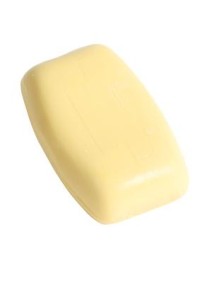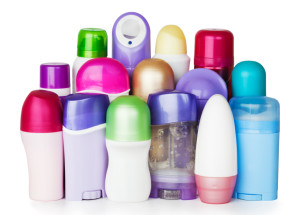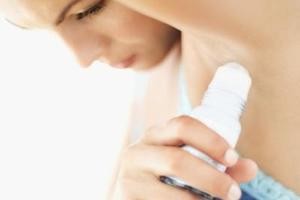
Start Your Own Empire
Manufacturing Cosmetics, Makeup, HairCare,
Sanitizers & Detergents
How To Make Deodorants & Anti-Perspirants ... Start your Own Business
Deodorants and anti-perspirants are among the highest volume selling personal care products in the world.
The article below provides an overview into the basic formulary of making deodorants and antiperspirants. With the AustraLab program, you don’t need to understand the chemistry of making these products. I’ve done all the hard work for you. The formulations have been tested for their efficiency and ease of manufacturing.
Click here to discover how to make professional-quality deodorant and antiperspirants
Antiperspirants are used primarily to reduce axillary (armpit) wetness. Deodorants (except soaps) are employed to reduce axiliary odor. Since this is considered a non-therapeutic purpose and the function of the body is not considered to be altered, they are classed as cosmetics.
Anti-perspirants and deodorants have two distinct – and quite different – functions. As the name implies, antiperspirants are designed to minimize, or control, perspiration. Deodorants are designed to reduce or eliminate odour. The two products work best when combined. Less perspiration means there is less moisture (sweat) on the skin, for hungry bacteria to break down and metabolize. This, in turn, means less body odour. An anti-perspirant will not stop all wetness, but what does sneak through will be controlled by the deodorant.
Several metal salts have astringent properties including those of aluminium, zirconium, zinc, iron, chromium, lead, mercury and several rarer metals.
Mechanism of Deodorants & Deodorant Ingredients
Since axillary odor is largely produced by the action of bacteria on nutrients present in apocrine secretion, any compound which inhibits the growth of those micro-organisms found in the axillae will, in theory, exhibit deodorant properties.
Evaluation of antiperspirants
Efficacy of antiperspirants
The efficacy of antiperspirant is best defined as the percentage reduction in the rate of sweating in the axilla that may be achieved after a realistic application or series of applications of the test product. The preferred methods for the determination of efficacy are gravimetry or the use of electronic hygrometers.
Product Formulation – Antiperspirants
Aerosols
Antiperspirant in powder suspension, are prepared using micronized powdered aluminium chlorohydrate and oil base with 3 – 4% active ingredient. Many combinations of raw materials are available for the formulation of aerosol antiperspirants. In addition, formulations must provide maximum antiperspirant and deodorant effectiveness, maximum safety, cosmetic elegance and minimum staining on clothing.
The emollient or carrier for the aluminium chlorohydrate is used to produce a smooth feel on the skin and to help the powder to adhere. Commonly, an ester such as isopropyl myristate is used, although some products contain volatile silicones to reduce staining of clothes.
A suspending agent is added to prevent agglomeration of the aluminium chlorohydrate which could lead to valve blockage and leakage of the packaging. Typical suspending agents are silica and bentonite derivatives. Fumed silica has an extremely fine particle size and forms a coating over the powder particles to prevent the development of hard caking.
Antiperspirant Sticks
The antiperspirant stick usually consists of a wax-like matrix which serves as a carrier for aluminium chlorohydrate powder and volatile silicone. A low-melting matrix and a high-boiling volatile silicone are necessary in order to conserve the latter during processing. For this reason, stearyl alcohol is preferred over stearic acid because of its lower melting point (58.5° C versus 69.9° C).
Antiperspirant Creams
While oil-in-water emulsions provide a convenient vehicle for storing and delivering antiperspirant actives, compositions of this type tend to produce a undesirable wet, cold and/or sticky sensation when they are applied to and rubbed into the skin. This can be minimized somewhat by utilizing compositions in anhydrous form.
Roll-on Antiperspirants
They are generally either the emulsion products or aqueous alcoholic solutions thickened with cellulose gums. The aqueous alcoholic products generally dry quicker and are less sticky than the emulsion products. The viscosity of the final product is important to avoid leakage around the roll ball.
Product Formulation – Deodorants
Deodorant Soaps
 Among the deodorants, the toilet soap market is one of the most important markets in the world. The most frequently used anti-microbial agents in soaps at the present time are trichlocarban, cloflucarbon and triclosan. All but triclosan are active only against gram positive organisms in the presence of soap. Triclosan is active against both gram positive and many gram negative organisms. Triclosan works as an antimicrobial by blocking an enzyme called enoyl-ACP (acyl-carrier protein) reductase (also known as ENR) in microorganisms. Bacteria need this enzyme for fatty acid synthesis, which is used for creating cell membranes. Without it, the bacteria can’t reproduce.
Among the deodorants, the toilet soap market is one of the most important markets in the world. The most frequently used anti-microbial agents in soaps at the present time are trichlocarban, cloflucarbon and triclosan. All but triclosan are active only against gram positive organisms in the presence of soap. Triclosan is active against both gram positive and many gram negative organisms. Triclosan works as an antimicrobial by blocking an enzyme called enoyl-ACP (acyl-carrier protein) reductase (also known as ENR) in microorganisms. Bacteria need this enzyme for fatty acid synthesis, which is used for creating cell membranes. Without it, the bacteria can’t reproduce.
Aerosol Deodorants
The alcoholic solution of bactericide is the base of aerosol deodorants. A product called a “deo-cologne” is based on alcoholic solution of perfume. It is used as a body spray.

Subscribe Now – Receive the lastest news & updates from AustraLab
You might also like ...

How To Make Shaving Products
Start Your Own EmpireManufacturing Cosmetics, Makeup, HairCare,Sanitizers & Detergents How To Make Shaving Products … Start your Own Business Click here to learn the trade

How to Make Hand Creams & Cleansers
Start Your Own EmpireManufacturing Cosmetics, Makeup, HairCare,Sanitizers & Detergents Making Hand Creams & Body Creams … Start your Own Business Click here to learn the

Bath Body Products & Private Label Cosmetics – A High Profit Cosmetic Manufacturing Combination
Start Your Own EmpireManufacturing Cosmetics, Makeup, HairCare,Sanitizers & Detergents Making Private Label Bath & Body Products … Start your Own Business Click here to learn

Deodorants Can Make You a Fortune
Start Your Own EmpireManufacturing Cosmetics, Makeup, HairCare,Sanitizers & Detergents Making Deodorants & Toiletries … Start Your Own Business Click here to learn the trade secrets
© 2020 AustraLab
